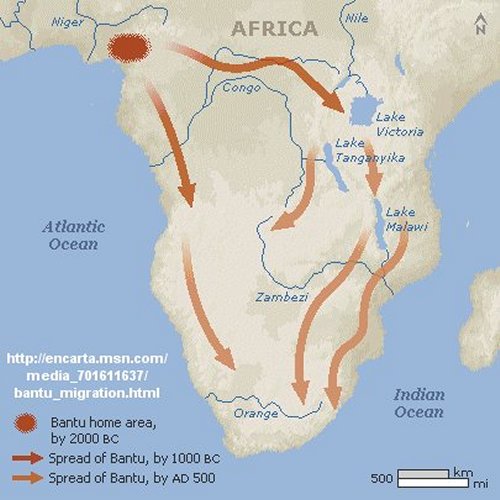WHI-Chap19-Bantu migrations
The earliest Bantu speakers, around 4000 B.C.E, inhabited a region in Africa near the eastern part of modern-Nigeria. They settled along the banks of rivers, traveled by canoes, and cultivated yams. They were an agricultural society who traded with forest peoples for meat, honey, and other products. The Bantu speaking people adopted crops such as millet and sorghum and kept and raised goats and guinea fowl. They lived in clan-based villages headed by chiefs who represented their village in problems with other villages and conducted religious ceremonies. By 3000 B.C.E, they had spread into the forest regions of west Africa and by 2000 B.C.E, they had expanded to the south near the Congo River Basin. Bantu speaking peoples occupied most of Africa below the Equator by 1000 B.C.E. These migrations were not mass movements of people, but were irregular moves that helped to spread Bantu languages and culture. The reasons for such migrations were mainly population pressures. The canoes were used for easy travel to a new location when pressures for space got too high and the agricultural surpluses created a larger Bantu population. The large population helped contribute toward the original cause of the migrations and also placed pressures on the smaller groups of forest dwellers as the Bantu peoples moved further inland. The production of iron metallurgy after 1000 B.C.E. quickened the the population growth as agriculture became easier and more efficient and led to more migrations.

T&E pages: 80-82
Created by: Hannah Worscheh